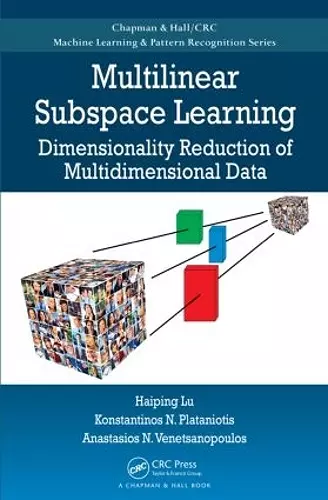Multilinear Subspace Learning
Dimensionality Reduction of Multidimensional Data
Konstantinos N Plataniotis author Haiping Lu author Anastasios Venetsanopoulos author
Format:Hardback
Publisher:Taylor & Francis Inc
Published:11th Dec '13
Currently unavailable, and unfortunately no date known when it will be back

Due to advances in sensor, storage, and networking technologies, data is being generated on a daily basis at an ever-increasing pace in a wide range of applications, including cloud computing, mobile Internet, and medical imaging. This large multidimensional data requires more efficient dimensionality reduction schemes than the traditional techniques. Addressing this need, multilinear subspace learning (MSL) reduces the dimensionality of big data directly from its natural multidimensional representation, a tensor.
Multilinear Subspace Learning: Dimensionality Reduction of Multidimensional Data gives a comprehensive introduction to both theoretical and practical aspects of MSL for the dimensionality reduction of multidimensional data based on tensors. It covers the fundamentals, algorithms, and applications of MSL.
Emphasizing essential concepts and system-level perspectives, the authors provide a foundation for solving many of today’s most interesting and challenging problems in big multidimensional data processing. They trace the history of MSL, detail recent advances, and explore future developments and emerging applications.
The book follows a unifying MSL framework formulation to systematically derive representative MSL algorithms. It describes various applications of the algorithms, along with their pseudocode. Implementation tips help practitioners in further development, evaluation, and application. The book also provides researchers with useful theoretical information on big multidimensional data in machine learning and pattern recognition. MATLAB® source code, data, and other materials are available at www.comp.hkbu.edu.hk/~haiping/MSL.html
"…this book is built to be read as a rich and yet accessible introduction… artfully structured for a specialized audience of new researchers and bleeding-edge practitioners. …The treatment builds an overarching framework and provides an analytical reader with a well-expressed taxonomy on the foundations of historical developments and similarity in content and goals. Thus, packaged, current research is endowed with instant meaning and purpose, the derivation of which would initially elude a newcomer to this complex and articulated branch of machine learning."
—Computing Reviews, November 2014
"Experimentally inclined readers will probably like this book … . Practitioners will appreciate that the presentation of the subject matter is goal oriented … The structure that this book builds can allow a neophyte to avoid much of the initial confusion and wasted effort necessary to classify unfamiliar work and distinguish between what may be useful or not to one’s intents and interests. … an exquisitely enriched literature review that is almost good enough to use as an auxiliary graduate textbook … a rich yet accessible introduction …"
—Computing Reviews, October 2014
ISBN: 9781439857243
Dimensions: unknown
Weight: 544g
296 pages